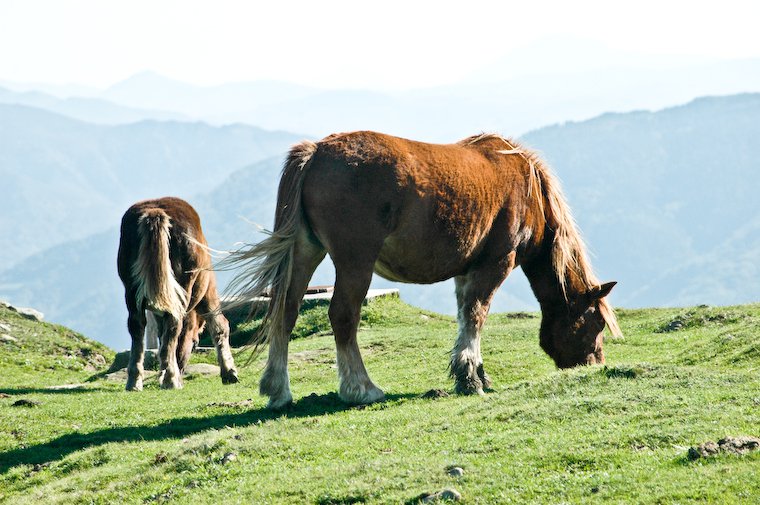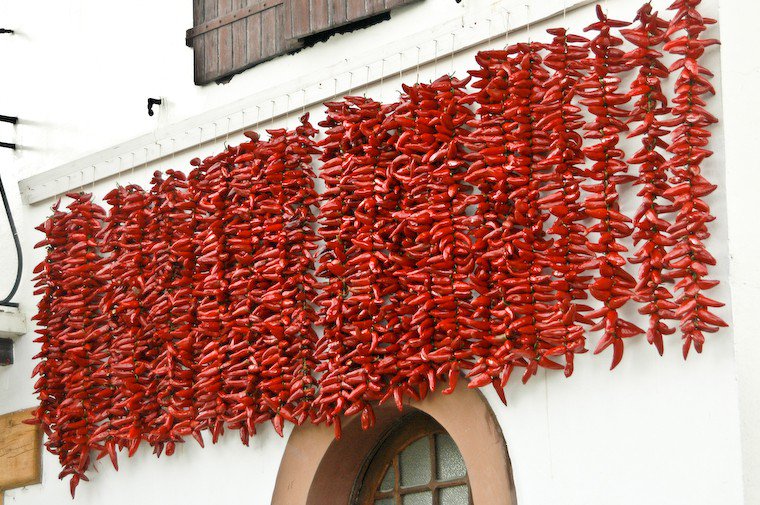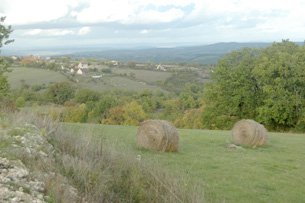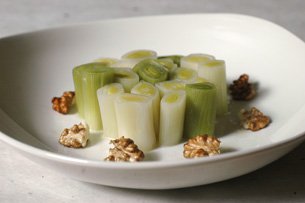Leaving Bayonne, we drove down the Atlantic coast to see Biarritz and Saint-Jean-de-Luz. We stayed in this fair beach city for the night and had a really nice dinner at a modern-Basque restaurant called Olatua — an excellent cod with txorizo and a mighty fine gâteau basque.
In the morning we left and crossed the Spanish border to visit San Sebastián, in the Spanish Basque country. The road to get there was magnificent, offering heart-stopping vistas at every turn of the road — which means it took us an inordinate amount of time to cross the Pyrenees, as we were constantly stopping the car to take pictures, enjoy the fresh mountain air, and say hi to horses and cattle who were grazing idly in the sun and forceful wind. San Sebastián itself was great and we really enjoyed our walk around the narrow streets of the historical center, but the highlight was definitely food-related, as we sat down for a late lunch at a tapas bar called Aralar. We adored the concept of freshly-made pinchos laid out on the bar for us to take our pick: we more or less sampled and shared one of each delicious bite, and particularly enjoyed the tortilla and the octopus — tender, juicy and full of flavor.
The next day took us where I had been dying to go ever since I’d spotted the tiny speck on the map (stamping my feet in the car and having red, cute and spicy visions): Espelette, home of the über-pepper, le Piment d’Espelette (AOC). A lovely village in and of itself — all white houses and red shutters — it was further prettified by the very thing that makes it so famous, strings of Espelette peppers hung up to dry on facades and balconies, inside restaurants and homes.









